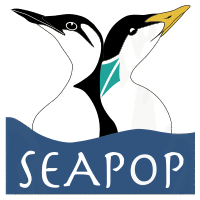Theme Section devoted to SEATRACK recently published in Marine Ecology Progress Series
Twelve articles summarizing phase I of SEATRACK were recently published in a theme section of the journal Marine Ecology Progress Series (MEPS). The issue reflects the extensive and long-term effort by many researchers that contribute to the project, as well as the extraordinary data sets arising from it.
Groundbreaking work
Issued 1-3 times per year, the theme sections of the journal MEPS are integrated multi-author analyses and syntheses highlighting cutting-edge research areas or problems. Twelve papers generated as part of the SEATRACK project were recently assembled and published in a special theme section of MEPS. Contributions cover a wide range of topics – from the development of seabird distribution maps for marine spatial planning to studies of the relationships between winter oceanographic conditions, winter movements and demography. Migration strategies and the relationship between winter distribution and contamination with pollutants are also highlighted.
World class dataset
In the SEATRACK project, seabird tracking data have been collected since 2014 using Global Location Sensors (GLS or geolocators) attached to individual seabirds, and more than 60 researchers from ten countries are participating. By 2020, a total of 5440 tracks were collected successfully from eleven species breeding in eight countries around the North Atlantic. The project is still ongoing and continues to accumulate the world’s largest set of systematically collected data on seabird movement outside the breeding season.
– I personally think that it is magnificent. Kudos to those who had the cutting-edge thinking to conceive and drive such an undertaking forward! says Professor Rory P. Wilson, the inventor of the GLS and one of the editors of the theme section of MEPS.
View the MEPS theme section:
Kontaktperson: Hallvard Strøm, Norsk Polarinstitutt

